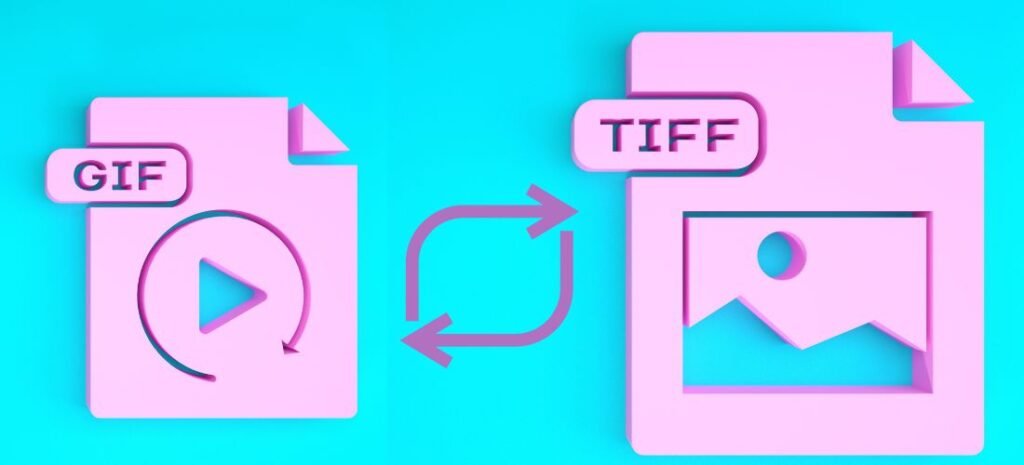Converting Multi-Frame Tiff to Gif in Cross-Platform .net Environments

Converting multi-frame TIFF (Tagged Image File Format) to GIF (Graphics Interchange Format) in cross-platform .NET environments has become increasingly important due to the widespread use of both formats and the need for compatibility across different systems. This article aims to provide a comprehensive guide on how to perform this conversion efficiently and effectively.
Understanding Multi-Frame TIFF and GIF
Before delving into the conversion process, it’s essential to understand the nature of multi-frame TIFF and GIF formats.
Multi-frame TIFF is a versatile file format commonly used for storing multiple images in a single file. It allows for the inclusion of multiple pages or frames within a single image file, making it suitable for applications where maintaining the integrity of individual frames is crucial, such as document scanning and medical imaging.
On the other hand, GIF is a widely used raster image format known for its support of animations and transparency. While it may not offer the same level of image quality as other formats like PNG or JPEG, its ability to store animations in a compact file size makes it a popular choice for web graphics and simple animations.
Challenges in Converting Multi-Frame TIFF to GIF
Converting multi-frame TIFF to GIF presents several challenges, particularly in maintaining image quality and ensuring compatibility across different platforms. The conversion process must preserve the integrity of each frame while adhering to the limitations of the GIF format.
Compatibility issues may arise when converting between different image formats, especially when dealing with proprietary or platform-specific features. Additionally, the lossy nature of GIF compression can lead to a degradation of image quality, particularly in complex or high-resolution images.
Read More: Teilnehmer: Hansa Rostock Gegen Schalke Spielerbewertungen
Cross-Platform .NET Environments
Cross-platform .NET environments provide developers with the flexibility to write code that can run on multiple operating systems without modification. This is achieved through the use of frameworks like .NET Core and Xamarin, which enable developers to build applications that target Windows, macOS, Linux, iOS, and Android.
While cross-platform development offers many benefits, it also introduces unique challenges, particularly when it comes to accessing platform-specific features and libraries. However, with careful planning and adherence to best practices, developers can create applications that run seamlessly across different platforms.
Tools for Converting Multi-Frame TIFF to GIF in .NET
Fortunately, several libraries and software tools are available for converting multi-frame TIFF to GIF in .NET environments. These tools offer various features and capabilities, allowing developers to choose the one that best fits their needs and requirements.
Some popular libraries for image conversion in .NET include ImageMagick, Magick.NET, and LibTiff.NET. These libraries provide comprehensive support for manipulating and converting image files, including multi-frame TIFF to GIF conversion.
Step-by-Step Guide to Converting Multi-Frame TIFF to GIF in Cross-Platform .NET
- Installing Necessary Libraries: Begin by installing the required libraries for image manipulation and conversion, such as ImageMagick or Magick.NET.
- Writing Code for Conversion: Write code to open the multi-frame TIFF file, extract individual frames, and save them as separate images. Then, use the appropriate library to create a GIF animation from the extracted frames.
Best Practices for Conversion
When converting multi-frame TIFF to GIF, it’s essential to follow best practices to ensure optimal results. This includes maintaining image quality, optimizing performance, and adhering to industry standards and guidelines.
Testing and Debugging
After implementing the conversion process, thorough testing and debugging are crucial to identify and resolve any issues or errors that may arise. This involves testing the conversion process with various input files and scenarios to ensure compatibility and reliability.
Benefits of Using .NET for Conversion
Using .NET for multi-frame TIFF to GIF conversion offers several benefits, including:
- Efficiency: .NET provides a robust and efficient platform for developing image processing and conversion applications.
- Cross-Platform Compatibility: With .NET Core and Xamarin, developers can create applications that run on multiple platforms without modification.
Real-World Applications
The conversion of multi-frame TIFF to GIF has numerous real-world applications across various industries, including:
- Medical Imaging: Converting medical imaging scans stored in multi-frame TIFF format to GIF for easy sharing and viewing.
- Document Management: Converting multi-page documents stored in TIFF format to GIF for online distribution and viewing.
Future Trends
As technology continues to advance, we can expect to see further improvements in image conversion techniques and tools. Emerging technologies such as machine learning and artificial intelligence are poised to revolutionize image processing and conversion, making it faster, more accurate, and more accessible than ever before.
Conclusion
In conclusion, converting multi-frame TIFF to GIF in cross-platform .NET environments is a valuable skill for developers and businesses alike. By understanding the challenges involved and following best practices, developers can create efficient and reliable conversion processes that meet the needs of their users and applications.
Read More: Stanley Starbucks Cup: A Journey of Elegance and Sustainability
FAQs
-
How do I install the necessary libraries for conversion?
- You can install libraries like ImageMagick or Magick.NET using package managers like NuGet or by downloading and installing them manually from their respective websites.
-
Can I convert other image formats to GIF using the same method?
- Yes, the same method can be used to convert other image formats to GIF, provided that the necessary libraries support the input format.
-
Will converting TIFF to GIF affect image quality?
- Converting TIFF to GIF may result in some loss of image quality due to the compression applied during the conversion process. However, with careful settings and optimization, this can be minimized.
-
Is it possible to automate the conversion process?
- Yes, the conversion process can be automated using scripting languages or by integrating it into larger applications or workflows.
-
How can I ensure cross-platform compatibility after conversion?
- By using cross-platform .NET libraries and adhering to best practices for cross-platform development, you can ensure that your converted GIF files are compatible with a wide range of operating systems and devices.



